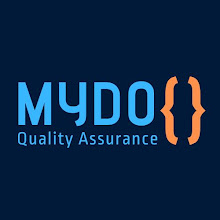In this article I will write about Software Testing Life Cycle or STLC model.
What is it?
Software Testing Life Cycle (STLC) is a sequence of systematic and planned activities which are executed during software testing activities. STLC is an important process because it ensure the quality of the software. Different with SDLC, that covers the whole software development process, STLC only covers testing activity.
Software Testing Life Cycle (STLC) has six major steps, which are:
- Requirement Analysis
- Test Planning
- Test Case Development
- Test Environment Setup
- Test Execution
- Test Closure
Each of those step has an entry criteria, activity, deliverable and exit criteria related to it.
Entry criteria are initial conditions that must be met before the test process can be run
Exit criteria are items that must be completed during the testing process so that testing can be considered complete.
Activity is activities that are carried out during the testing process.
Deliverable is the result that can delivered after the test is finished.
STLC Phases
Requirement Analysis: Requirement Analysis is the very first step in Software Testing Life Cycle (STLC). At this stage, the quality assurance (QA) team understands the requirements, like acceptance criteria or what to test. If something is missing or unclear, the quality assurance team meets with stakeholders to gain a better understanding of the requirements in detail. QA can decide whether software require manual or automation testing.
- Entry Criteria: Requirement specification, acceptance criteria, application architectural.
- Activity: Identify types of tests to be performed, Gather details about testing priorities and focus, Automation feasibility analysis (if required).
- Deliverable: List of all testable requirements, Automation feasibility report (if applicable).
- Exit Criteria: Signed off RTM, Signed off Automation feasibility report.
Test Planning: Test planning is the stage where QA manager/QA lead define testing strategy and make an estimation on effort and cost needed for the entire life cycle.
The team will decide on the required tools, roles, and training (if needed) for the project, etc.
- Entry Criteria: Requirements Documents.
- Activity: Preparation of test plan/strategy document for various types of testing, Test tool selection, Test effort estimation, Resource planning and determining roles and responsibilities, Training requirement.
- Deliverable: Test Strategy, Test Plan, and Test Effort estimation document.
- Exit Criteria: Approved Test plan document, Approved Test strategy document, Signed off effort estimation document.
Test Case Development: The test case development phase is started soon after the test planning phase is finished. In this phase, QA Team will create a test case. They also identify, create, review, and rework Test data based on the preconditions. If the test require automation test, QA team also create test scripts for the automation test.
- Entry Criteria: Requirements Documents (Updated version of unclear or missing requirement).
- Activity: Create test cases, automation scripts (if applicable), Review and baseline test cases and scripts, Create test data.
- Deliverable: Test cases, Test Scripts (if automation), Test data.
- Exit Criteria: Reviewed and approved test cases, test scripts, test data.
Test Environment Setup: Test environment setup is the critical part of the STLC. This phase aims to ensure readiness of the environment on which software is tested. QA team is responsible for the testing environment, sometime they work together with Dev team, SysOps or DevOps team. To check the readiness, QA team can use smoke test.
- Entry Criteria: Test Plan, Smoke Test cases, Test Data.
- Activity: Understand and prepare the required environment set-up, Perform smoke test on the build.
- Deliverable: Test Environment. Smoke Test Results.
- Exit Criteria: Working test environment setup, Valid test data setup, Successful smoke test.
Test Execution: After all those preparation, the QA team finally do the actual test. In this phase QA team start executing test cases based on test cases and test plans from the earlier phases.
- Entry Criteria: Test Plan document, Test cases, Test data, Test Environment.
- Activity: Execute tests as per plan, Document test results, and log defects for failed cases, Track the defects to closure.
- Deliverable: Test case execution report, Defect report.
- Exit Criteria: Execute all planned test cases, Log all defects found.
Test Closure: This is the end of the life cycle. The test is completed, test report is collected. QA team will analyze defect distribution by type and severity.
- Entry Criteria: Test Case Execution report (make sure there are no high severity defects opened), Defect report.
- Activity: Evaluate cycle completion criteria, Document the learning out of the project, Prepare Test closure report, Test result analysis to find out the defect distribution by type and severity.
- Deliverable: Test Closure report, Test metrics.
- Exit Criteria: Signed off Test Closure report.
Follow me on
Facebook: https://www.facebook.com/mydoqa/
Instagram: https://www.instagram.com/mydoqa/
Twitter: https://twitter.com/MydoQa
Resource
[embed]https://www.geeksforgeeks.org/software-testing-life-cycle-stlc/[/embed]
[embed]https://www.geeksforgeeks.org/software-testing-life-cycle-stlc/[/embed]
[embed]https://www.geeksforgeeks.org/software-testing-life-cycle-stlc/[/embed]
[embed]https://www.geeksforgeeks.org/software-testing-life-cycle-stlc/[/embed]
[embed]https://www.geeksforgeeks.org/software-testing-life-cycle-stlc/[/embed]
[embed]https://www.geeksforgeeks.org/software-testing-life-cycle-stlc/[/embed]


0 comments:
Post a Comment